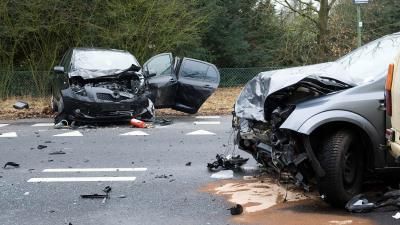
Why are United States residents feeling less safe?
Almost two in five people (39%) in the USA feel less safe than they did five years ago – up from 27% in 2019 – a new global report shows.
This page is approximately a 3 minute read
This page was published on

It’s a reminder for policymakers that, even in the midst of a global pandemic, there is a broad spectrum of competing risks that must be considered in influencing people’s safety-related choices and behaviour.
Road crashes were the most named threat in most high-income regions, particularly Northern Europe and Australia/New Zealand, exceeding a third in Finland (46%), Iceland (43%), New Zealand (39%), Norway (36%) and the Netherlands (35%).
Meanwhile, crime and violence remained the top concern in Latin America and Southern Africa, named by more than four in 10 people in both regions (43% and 42%, respectively). In some of the largest Latin American countries it was almost or more than half, including Venezuela (60%), Ecuador (50%), Argentina (49%), Colombia (47%) and Mexico (46%).
The Poll also highlights key differences between what people fear as a risk and their actual experiences of those risks – for instance, people globally see violence and crime as one of the biggest threats to their safety, but actual experience of harm from this source, while still significant, is low in comparison to the perception.
At least half of those who cited war and terrorism, politics and corruption, or crime and violence as their greatest risk sources said they felt less safe in 2021 than five years previously — implying a growing sense of dread regarding political instability and governments’ ability to keep people safe.
Dr. Sarah Cumbers Former Director of Evidence and Insight, Lloyd’s Register Foundation
When policymakers are thinking about how to work with communities to reduce a particular risk, they can’t do that in isolation, they need to be beware of all the other everyday risks that individuals are facing.
Road crashes were the most-named threat to personal safety in most high-income regions — including Northern/Western Europe, Southern Europe, Northern America, and Australia/New Zealand. This response was particularly common in Northern Europe and Australia/New Zealand, topping 30% in Finland (46%), Iceland (43%), New Zealand (39%), Norway (35%), the Netherlands (35%) and Australia (31%).
Road crashes may be particularly top-of-mind for people living in highly urbanised, high-income countries and territories, where vehicle ownership rates and traffic levels are higher. However, as noted in the 2019 World Risk Poll report, these countries often have better-designed and maintained roads and highways and more consistently enforced traffic safety laws, helping keep road fatalities lower than in many lower-income regions.
13% of people named road related accidents as the biggest risk to their safety, followed by 12% of people who named crime and violence.
Dr. Etienne Krug Director, Department for Social Determinants of Health, World Health Organisation
These findings show us that road traffic crashes and violence rank highly on the list of what people worry about most. Although we see a lot of progress on reducing road traffic deaths and violent crime, often these perceived risks are not wholly matched by policies so it’s important global and local policymakers use this data when developing their plans and interventions.”
In your own words, what is the greatest source of risk to your safety in your daily life?
This first report of the 2021 World Risk Poll provides new global insights that identify the differences between people’s thoughts about, and experiences of risk before and after the start of the Covid-19 pandemic. (PDF, 3.15MB)


